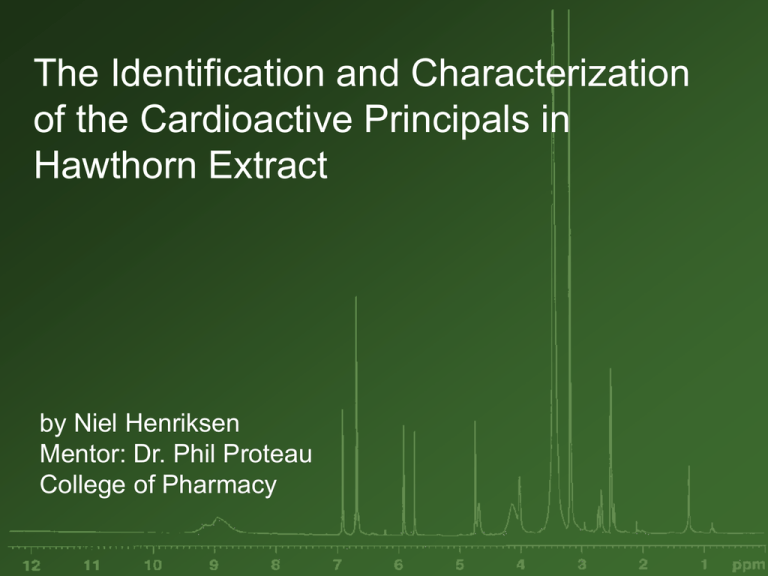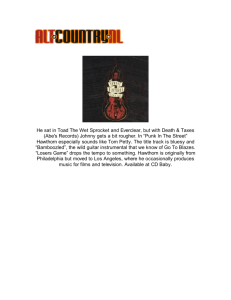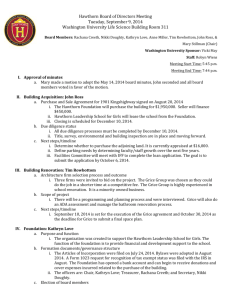The Identification and Characterization of the Cardioactive Principals in Hawthorn Extract
advertisement

The Identification and Characterization of the Cardioactive Principals in Hawthorn Extract by Niel Henriksen Mentor: Dr. Phil Proteau College of Pharmacy Hawthorn and Heart Failure • Congestive heart failure (CHF) results from coronary artery disease, a previous heart attack, high blood pressure, heart defects, and infections in the heart tissue. • Nearly 5 million people in the United States are diagnosed with CHF. • The symptoms of CHF include shortness of breath, fatigue, swelling and kidney dysfunction. Hawthorn Extract Benefits • Clinical trials by the NYHA demonstrated: (+) (-) (-) (-) exercise tolerance dyspnea (shortness of breath) ankle swelling blood pressure • Studies on cardiac tissue show: (+) inotropic effects (+) cardiac flux (+) vasorelaxation (+) anti-arrhythmic potential Hawthorn Extract Unknowns • Active compound(s) – Flavonoids and Procyanidins? • • • • Mechanism of action Proper dosing Duration of therapy Most effective extract source (berries, leaves, or flowers) Project Goals • Develop cell based bioassays for evaluation of the direct cardiac effects of hawthorn extract • Using bioassay-guided fractionation, identify the components in hawthorn extract with cardiac activity Bioassay Tests • Rate of Contraction • Amplitude of Contraction QuickTime™ and a DV - NTSC decompressor are needed to see this picture. Isolation Techniques • • • • Solvent Extraction Thin-Layer Chromatography Large Scale Chromatography High Performance Liquid Chromatography Identification Techniques • Mass Spectrometry • Nuclear Magnetic Resonance (NMR) Spectroscopy Future Goals • Complete bioassay-guided fractionation • Determine the most effective extract source • Determine the mechanism through with hawthorn extract functions • Correlate the plasma levels of cardioactive component with the physiologic effects on animal models Acknowledgements • • • • • Dr. Phil Proteau Shannon Long Dr. Theresa Filtz Dr. Kevin Ahern Howard Hughes Medical Institute



